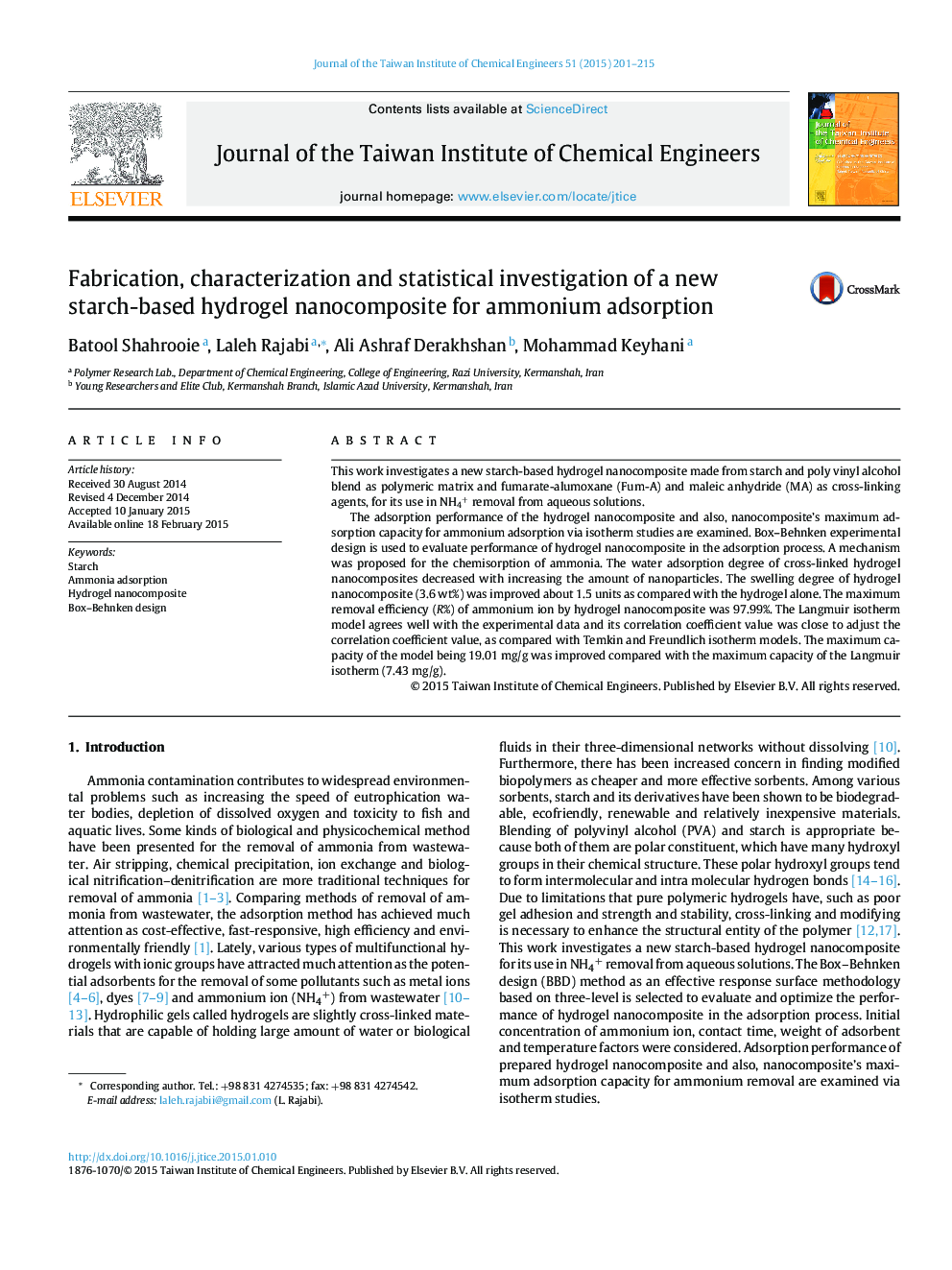| Article ID | Journal | Published Year | Pages | File Type |
|---|---|---|---|---|
| 690788 | Journal of the Taiwan Institute of Chemical Engineers | 2015 | 15 Pages |
•Starch-based hydrogel nanocomposite chemisorbed ammonium ions.•The highest removal efficiency of nanocomposite adsorbent was 97.99%.•A mathematical model was established to interpret the mechanism of the effects.•Most effective factors in the model were time, concentration and adsorbent weight.•Validity of the experimental model was verified through six checkpoints.
This work investigates a new starch-based hydrogel nanocomposite made from starch and poly vinyl alcohol blend as polymeric matrix and fumarate-alumoxane (Fum-A) and maleic anhydride (MA) as cross-linking agents, for its use in NH4+ removal from aqueous solutions.The adsorption performance of the hydrogel nanocomposite and also, nanocomposite's maximum adsorption capacity for ammonium adsorption via isotherm studies are examined. Box–Behnken experimental design is used to evaluate performance of hydrogel nanocomposite in the adsorption process. A mechanism was proposed for the chemisorption of ammonia. The water adsorption degree of cross-linked hydrogel nanocomposites decreased with increasing the amount of nanoparticles. The swelling degree of hydrogel nanocomposite (3.6 wt%) was improved about 1.5 units as compared with the hydrogel alone. The maximum removal efficiency (R%) of ammonium ion by hydrogel nanocomposite was 97.99%. The Langmuir isotherm model agrees well with the experimental data and its correlation coefficient value was close to adjust the correlation coefficient value, as compared with Temkin and Freundlich isotherm models. The maximum capacity of the model being 19.01 mg/g was improved compared with the maximum capacity of the Langmuir isotherm (7.43 mg/g).
Graphical abstractFigure optionsDownload full-size imageDownload as PowerPoint slide
